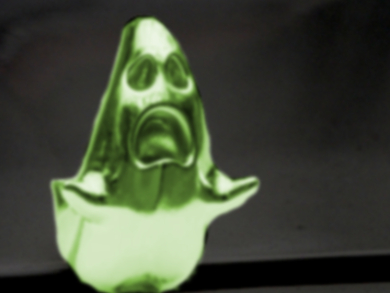Be prepared for Halloween with glowing slime and the chemistry behind it.
Make Glowing Slime
Pour 236 mL (1 cup) of hot water in a medium-sized bowl. Add 118 mL (4 ounces) clear liquid non-toxic glue, and then 3 tablespoons glow-in-the-dark craft paint and stir until combined. In a separate bowl, mix 2 teaspoons borax (or liquid starch, sodium borate, sodium tetraborate, disodium tetraborate) with 79 mL (1/3 cup) of hot water. Gradually add the borax solution while stirring.
The slime can be stored in a zipper bag or an airtight container for about two weeks, otherwise it becomes more rubbery.
Non-toxic Slime for Smaller Children
Mix 473 mL (2 cups) of cornstarch with 236 mL (1 cup) of warm water in a medium-sized bowl. Continue stirring and add 2–3 tablespoons of glow-in-the-dark craft paint.
Caution
Do not eat the slime, keep it away from furniture, do not flush it down the toilet or the sink.
If the slime does not glow that much anymore, keep it in the light for at least 15 minutes.
How Does Glow-in-the-Dark Paint Work?
So-called glow-in-the-dark paint contains phosphorescent chemicals. Such compounds absorb light energy, e.g, in the form of ultraviolet radiation, and are excited into a high-energy state. Then they very slowly return to their lower-energy ground state and re-emit the energy as visible light. The glowing effect can last several hours.
The common green glow is created by compounds such as copper-doped zinc sulfide (ZnS:Cu) or europium-doped strontium aluminate (SrAl2O4:Eu).
- How to Make Glow in the Dark Slime, wikihow.com, accessed October 28, 2016.
Also of Interest
- Happy Halloween – What To Do With Your Pumpkin,
ChemistryViews.org 2015.
Pumpkins contain healthy compounds, so why not bake a pumpkin pie?



